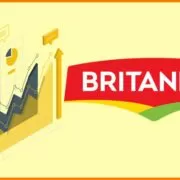The next internet revolution is in the works and aims to put more control over web content in the hands of its users. Web 3.0, which will be built on blockchain–the technology underlying bitcoin and other cryptocurrencies–aims to eliminate all big intermediaries, including centralised governing bodies or repositories. Put simply, with Web 3.0, you won’t need an account for each social platform. With just one account, you could seamlessly move between different social platforms, browse the internet for information, or even shop. Web 1.0, or the first phase of the World Wide Web, started in the 1990s when the dot-com boom enabled easy access to information. However, the information was largely disorganised and difficult to navigate. Google and MSN, which entered with Web 2.0 in the late 1990s, brought order to chaos, sorting the information, and presenting it in an organised manner. They helped in ranking search results based on popularity. The onset of this era enabled simpler exchange of information with others over the internet. However, this led to the gradual shifting of power into the hands of a few large corporations. The next version of the internet–Web 3.0–is being proposed by content creators with the intention of reassuming power. This will open up the internet to new search engines or social networks with the control over content not restricted to just a few companies.
As Mat Dryhurst, a Berlin-based artist and researcher who teaches classes at New York University on the future of the internet,pointed out to NPR, “There’s a small group of companies that own all this stuff, and then there’s us who use it, and despite the fact that we contribute to the success of these platforms, we don’t have anything to show for it.”
What changes from Web 1.0 to Web 3.0?
Web 1.0
There were very few content creators when the internet first brought information closer to the seekers. The entire ecosystem was reliant on content consumers who constituted a major chunk of all internet users.Most of the content was available in the form of static web pages and was hosted on either web servers run by Internet Service Providers (ISPs) or free web servers. Therefore, Web 1.0 was formed as a ‘content delivery network.’As the showcased content was consumed, users were charged per page viewed. Online directories pointed content consumers towards the information they were searching for.
Web 2.0
As more content creators came online, websites started hosting user-generated information, thereby focusing on the usability of the content. Websites on the internet became more interactive and content consumers were allowed to interact with creators through comments on the evolved webpages. In turn, the content became more dynamic as it was being modified based on user feedback. The flow of information became freer and communication between website owners and website users improved.
Tools introduced with Web 2.0:
- Blogs
- Podcasts
- Tagging other users on content pages
- Social Networking
- Social Media Platforms
- Voting on web content through user feedback
The importance of opinions, feedback, and user perspectives grew in the era of Web 2.0.
Web 3.0 (still under development)While Web 2.0 improved communication and online interaction, Web 3.0 shifts its focus to connectivity, content relevance, content outreach, and performance. After decades of emphasising the look of websites and web pages, work on the evolution of ‘back end’ capabilities has begun. The driving force of this improvement was user experience. Web 3.0 delves deep into a plethora of aspects. As Olga Mack, entrepreneur and blockchain lecturer at the University of California, Berkeley,explained to NPR, “To the average person, it does sound like voodoo.”But when you press a button to switch on lights, do you understand how the electricity is made? You don’t have to know how electricity works to understand the benefits. Same is true of the blockchain,” Mack explained.
In this third-generation web, sites and pages will collect the information users convey (through voice, text, or other forms of media) and intelligently process it to tailor it for each user. The same content will be displayed differently for different users. The salient feature, therefore, is data will no longer be owned by a single entity but be a shared resource. Esther Crawford, Senior Project Manager at Twitter, told NPR that the social media company is studying ways to incorporate Web3 concepts into the social network, like one day being able to log into the social network and tweet from an account associated with a cryptocurrency, not a Twitter account. She sees the future differently: not a crypto version of Twitter replacing Twitter. But rather Twitter introducing Web3 features on top of standard Twitter.
The following table will help better understand the evolution of the web:
| Web 1.0 | Web 2.0 | Web 3.0 |
| Users could only read content. | Users can read content and leave feedback. | Users can create and ‘share’ personalised content. |
| Focus was only on website landing pages (static content) | Focus is on interaction-enabled content platforms. (Blogs, Wikis, etc) | Focus on content aesthetic as well as user needs. (Livestreams) |
| Content was owned | Content is shared | Content will be collectively owned and shared |
| Content directories contained all the information. | Tagging on content pages has enabled information sharing with other users. | Custom content will be displayed for each user based on feedback. |
What will Web 3.0 mean for cryptocurrencies?
Just like blockchain technology, Web 3.0 strives to create a more ‘democratic’ version of the internet. Leading crypto players bank upon the smart contract capabilities of the blockchain and incorporate decentralised applications (dApps) into the ecosystem. DApps are applications that run on a blockchain network of computers instead of depending on a single computer. Smart contracts and dApps will help automate the processes to make the internet more ‘democratic’.Reports suggest thatethereumcould likely be the most popular Web 3.0 blockchain given its role in helping developers of dApps. This will, in turn, put more focus on ether. There are other crypto projects such as Polkadot, Helium, Kusama, among others that are already working to improve the Web 3.0 experience. Web 3.0 will also blend well with the metaverse making it easier to buy and sell non-fungible tokens or NFTs, that represent your ownership of a virtual good, with cryptocurrencies.
What about the sceptics?
Like any new tech leap, there are those who believe this is just another fantasy. James Grimmelmann, a Cornell University professor who studies law and technology, told NPR, “Web3 is vaporware,” referring to a product that’s announced but never delivered. He said: “It’s a promised future internet that fixes all the things people don’t like about the current internet, even when it’s contradictory.”Grimmelmann pointed out that if the idea behind Web 3.0 is to avoid handing over personal data to Big Tech companies, then blockchain is not the solution, since that will make even more data public. Tesla and SpaceX CEO Elon Musk also seems to be one such critic. “Web3 sounds like bs,” Musk said in a tweet in response to the tweets of Sam Altman, CEO of OpenAI, praising Web 3.0. While the idea of a third version of the internet has been brewing for a long time, it now remains to be seen if and when it becomes reality.
Source: CNBCTV18
Follow and connect with us onTwitter,Facebook, Instagram, andYoutube













Comments